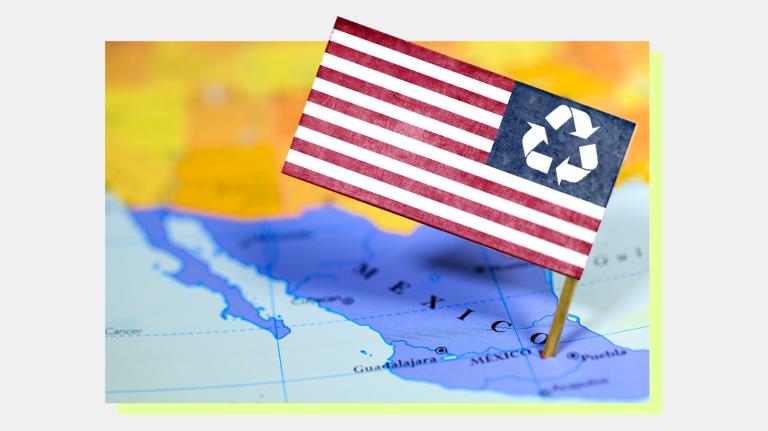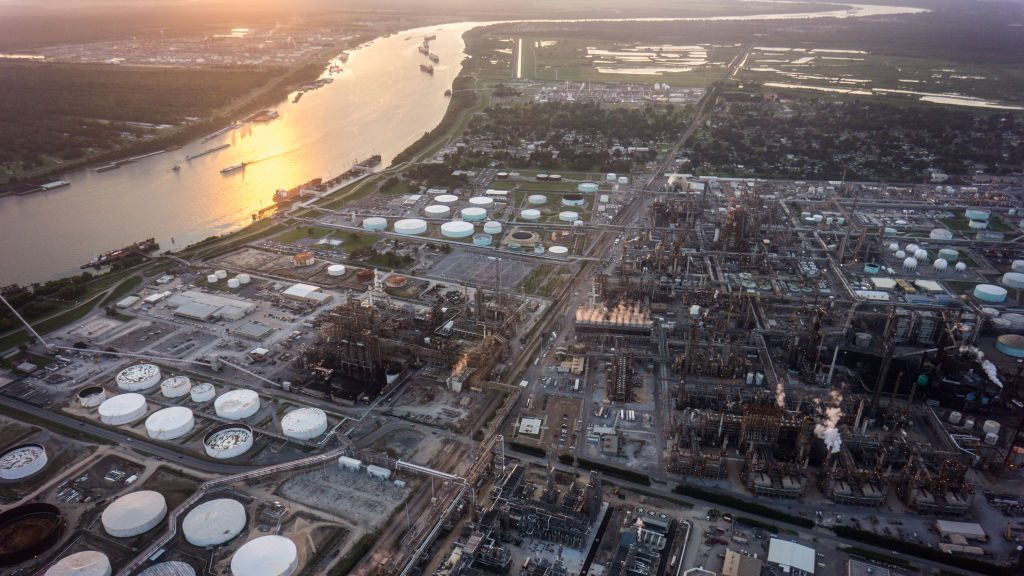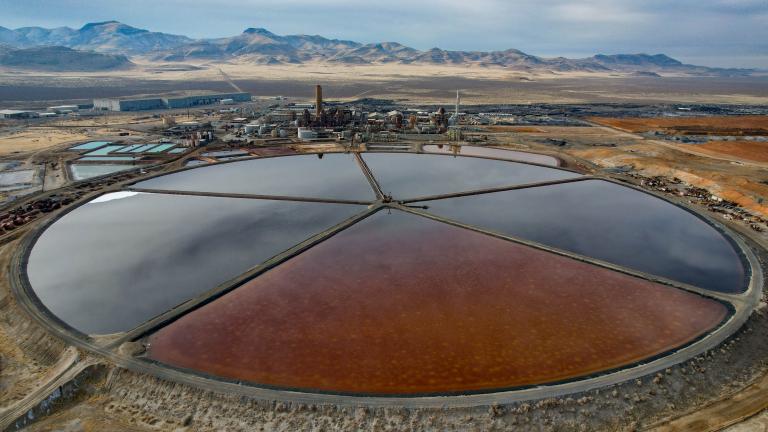For decades, residents living near large petrochemical facilities in the nation’s industrial corridors have struggled to secure even a basic understanding of the health risks that they face. These Americans have asked the government for monitoring devices to measure the quality of the air they breathe, and environmental advocates have demanded formal health assessments that account for the full spectrum of industrial emissions in their neighborhoods, rather than ones that only examine pollution sources in isolation. The Environmental Protection Agency has long failed to develop a robust response to these calls — until now.
Standing behind a podium in Louisiana’s St. John the Baptist Parish on Thursday, EPA Administrator Michael Regan announced a proposal to cut more than 6,000 tons of toxic air pollution a year, as well as vastly reduce the number of people exposed to cancer-causing chemicals such as ethylene oxide and benzene. (For comparison, industrial facilities in the U.S. released some 32,000 tons of cancer-causing chemicals in 2021).
The rules affect roughly 200 chemical plants across the nation’s industrial landscape, many of which are concentrated near communities of color in Texas and Louisiana and have evaded environmental laws in recent years. These are some of the most toxic plants in the nation, together releasing millions of pounds of cancer-causing pollutants each year, sometimes mere feet from schools and residential neighborhoods.
The Wednesday press conference marks Regan’s second visit to the town of LaPlace, where residents have spent the past six years fighting a synthetic rubber manufacturer owned by the Japanese chemical giant Denka. In February, the federal government sued the company for its emissions of the highly toxic chemical chloroprene in the vicinity of a predominantly Black elementary school.
In perhaps the most significant innovation introduced in the new rules, the EPA conducted a “community risk assessment” to inform residents of the consequences of the proposed regulations — the first time it has ever done so. Typically, when the agency measures a community’s health risk from toxic air pollution, it examines industrial sites in isolation. It’s an approach that fails to account for the true threat to public health in communities hosting multiple pollution sources and, according to numerous studies, has put millions of Americans at a greater risk of developing cancer simply by breathing.
The agency’s most recent analysis, however, examined cancer risks from all large facilities within six miles of the plants affected by the proposed rules. It found that roughly 104,000 people within these areas are exposed to a level of cancer risk that the agency considers unacceptable. If the proposed rules take effect, the analysis found that they would reduce the number of people exposed to unacceptable cancer risks in these communities by 96 percent.
“I pledged to prioritize and protect the health and safety of this community and so many others that live in the shadows of chemical plants,” Regan said Wednesday. “I’m proud that this proposal would help deliver on that commitment.”
The roughly 200 facilities targeted by the new rules release toxic chemicals from a variety of sources. Flares, which companies use to burn off chemical byproducts, are a key culprit. The proposed rules require facilities to increase the efficiency of flares, ensuring that smaller amounts of toxic chemicals are released into the air. The EPA is also proposing stricter standards for other sources of emissions such as storage tanks, process vents, and leaks from equipment.
In order to assess whether the new regulations are in fact reducing emissions, the agency is requiring that facilities using, producing, storing, or emitting one of six toxic chemicals — including ethylene oxide and chloroprene — conduct air monitoring at the edges of their properties. This fenceline monitoring data is expected to be posted to a public website. If facilities detect levels above thresholds set by the EPA, they’ll be required to identify the source of the emissions and reduce it. (Currently, only companies operating petroleum refineries are required to monitor the air on their industrial sites, and they exclusively measure benzene concentrations.)
The EPA found that the biggest risk reductions would result from curbing emissions from just eight plants in Texas and Louisiana that are particularly large ethylene oxide emitters.
The agency estimated that it will cost polluters roughly $1.6 billion to comply with the rules. It did not calculate a monetary value for the health benefits of reduced exposure to ethylene oxide, chloroprene, benzene and the other toxic chemicals that the rules target. However, the EPA estimated that reductions in ozone levels and volatile organic compounds would decrease health costs by more than $700 million.
“Toxic air pollution from petrochemical facilities has been poisoning communities, especially the many low-income areas and communities of color that live in the shadow of these facilities,” said Dionne Delli-Gatti, an associate vice president at the nonprofit Environmental Defense Fund, in a press release. “EPA’s proposal includes vital measures to reduce toxic petrochemical pollution, to hold polluters accountable, and to protect the people who have borne the brunt of the health threats from this pollution.”
The rules now face a long road before they can be finalized and take effect. Once the proposals are posted in the Federal Register, the EPA will accept written comments from the public for 60 days. The agency is then required to consider the comments and update the rules based on feedback before finalizing them. Along the way, it may also face legal challenges from industry groups.
The American Chemistry Council, a trade group that represents a number of the facilities affected by the rule, has previously challenged the agency’s assessment of the risk posed by ethylene oxide. In 2016, the EPA found that ethylene oxide is 30 times more toxic for adults than previously estimated, and it set the safe threshold for exposure to ethylene oxide at 11 parts per trillion. The Council has supported values around 2.4 parts per billion — orders of magnitude weaker than the EPA figure. As a result, the trade group has argued that it’s inappropriate for the agency to use the stricter ethylene oxide risk value when developing the rules proposed Thursday.
Congress asked the EPA to write these rules when it amended the Clean Air Act in 1990 to stop acid rain and tighten regulations on businesses that emit cancer-causing chemicals. The rules cover just two of more than 150 different categories of facilities across the nation’s industrial landscape. While it could take the agency years to comparably strengthen rules for other types of pollution sources, advocates heralded the EPA’s announcement as an important precedent-setting measure.
“The protections that these new EPA rules propose for the petrochemical sector are long overdue,” said Jane Williams, chair of the Sierra Club National Clean Air Team, in a press release. Passing rules that protect communities in the nation’s industrial corridors “renews the promise that Congress gave to the American people in 1990 when the Clean Air Act Amendments were enacted,” she added.
Editor’s note: The Sierra Club is an advertiser with Grist. Advertisers have no role in Grist’s editorial decisions.




